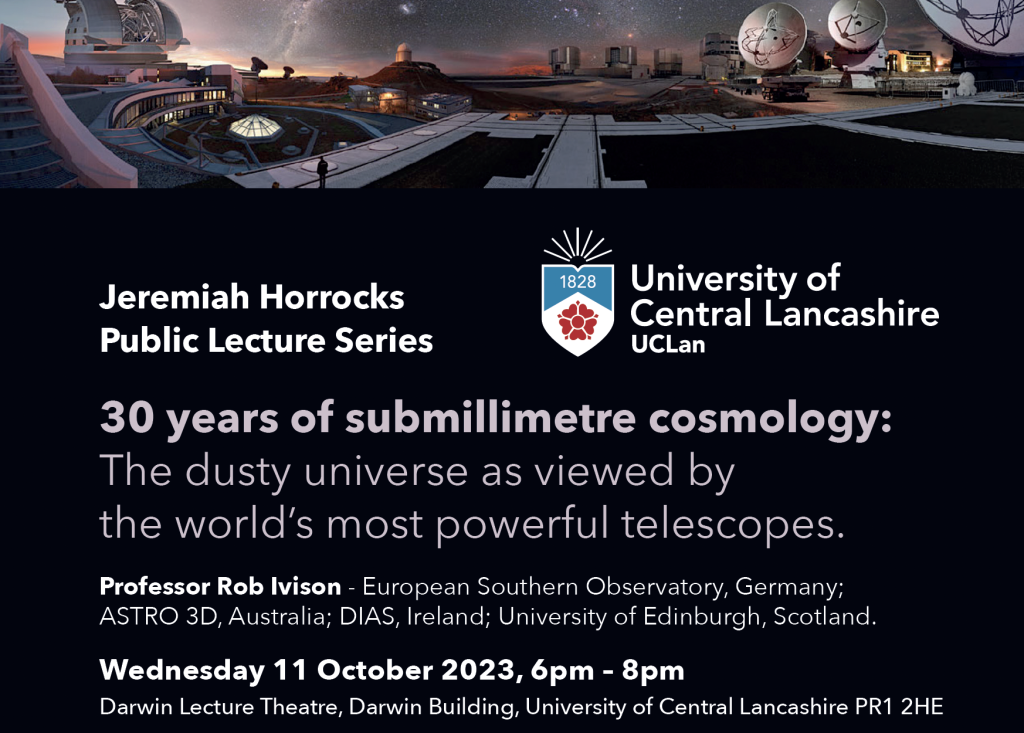
Join us on a journey of discovery as we gaze into the farthest reaches of the visible universe. Advances in submillimetre cosmology have led to the development of telescopes which allow us to peer ever further into space (and therefore back in time) to view distant stars that were lighting up their galaxies long before the Earth was formed.
The most intensely star-forming galaxies contain an abundance of space dust –tiny particles formed in the winds of stars, or in supernovae. Until the development of submillimetre telescopes, this dust blocked our view by completely absorbing the light from stars and black holes. Now that we can view them (partly thanks to a quirk of physics), we can better understand how they formed.
We’ll explore how telescopes have become more advanced over the past 30 years, culminating in the incredible images we’ve seen from the James Webb Space Telescope. And you’ll learn about the role that Preston academics have played along the way.
For more information email: VPDebattista@uclan.ac.uk
Book your free place on Eventbrite.
Biography
Professor Rob Ivison is currently on sabbatical from the European Southern Observatory, where he was the Director for Science for the last 9 years, looking after a group of around 100 research scientists, PhD students and postdoctoral fellows. He studied in Preston from 1985 through 1992. Before joining ESO, and following spells in Canada, Hawaii and London, Rob was Professor of Astrophysics at the University of Edinburgh, working on Blackford Hill at the Royal Observatory Edinburgh. He spent the noughties at the UK Astronomy Technology Centre, also in Edinburgh, where he was in charge of new initiatives, and part of several instrument-building teams that won international acclaim. In 1997, together with Ian Smail and Andrew Blain, Rob used a camera called SCUBA to make the first deep submm image of a small patch of the sky. The image revealed the first few examples of what turned out to be a vast population of heavily dust-enshrouded galaxies, which probably evolved into the massive galaxies we see around us in today’s Universe.
